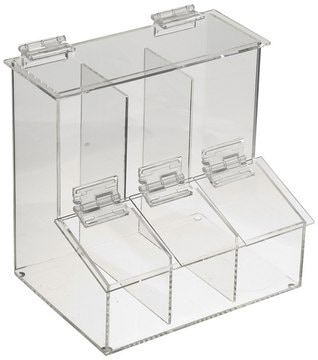17-10101
ChIPAb+ Acetyl-Histone H4 (Lys16) - ChIP Validated Antibody and Primer Set
from rabbit
Synonim(y):
H4K16Ac, Histone H4 (acetyl K16), H4 histone family, member A, histone 1, H4a, histone cluster 1, H4a
About This Item
Polecane produkty
pochodzenie biologiczne
rabbit
Poziom jakości
forma przeciwciała
affinity purified immunoglobulin
klon
polyclonal
reaktywność gatunkowa
vertebrates, human
producent / nazwa handlowa
ChIPAb+
Upstate®
metody
ChIP: suitable
immunoprecipitation (IP): suitable
western blot: suitable
numer dostępu NCBI
numer dostępu UniProt
Warunki transportu
dry ice
Opis ogólny
The ChIPAb+ Acetyl-Histone H4 (Lys16) set includes the Acetyl-Histone H4 (Lys16) antibody, a negative control normal rabbit IgG, and qPCR primers which amplify a 178 bp region of human RPL10 promoter. The Acetyl-Histone H4 (Lys16) and negative controls are supplied in a scalable "per ChIP" reaction size and can be used to functionally validate the precipitation of Acetyl-Histone H4 (Lys16)-associated chromatin.
Specyficzność
Immunogen
Zastosowanie
Representative lot data.
Sonicated chromatin prepared from HeLa cells (1 X 10E6 cell equivalents per IP) were subjected to chromatin immunoprecipitation using either 2 µg of Normal rabbit IgG or 2 µL of Anti-acetyl-Histone H4 (Lys16) and the Magna ChIP A Kit (Cat. # 17-610).
Successful immunoprecipitation of acetyl-Histone H4 (Lys16) associated DNA fragments was verified by qPCR using ChIP Primers, RPL10 Promoter as a positive locus, and β-Globin primers as a negative locus. (Please see figures). Data is presented as percent input of each IP sample relative to input chromatin for each amplicon and ChIP sample as indicated.
Please refer to the EZ-Magna ChIP A (Cat. # 17-408) or EZ-ChIP (Cat. # 17-371) protocol for experimental details.
Western Blot Analysis:
Representative lot data.
Recombinant Histone H4 (Cat # 14-697) (lane1) and HeLa acid extract (lane 2) was resolved by electrophoresis, transferred to PVDF and probed with anti-Acetyl Histone H4 (Lys16) (0.1 μg/mL).
Proteins were visualized using a donkey anti-rabbit secondary antibody conjugated to HRP and a chemiluminescence detection system.
Arrow indicates Acetyl Histone H4 (Lys16) (~10 kDa) (Please see figures).
Multiplexing (Luminex):
Representative lot data.
This antibody specifically recognizes histone H4 acetylated on Lys16 by Luminex assay (Please see figures).
Peptide Inhibition Assay:
Representative lot data.
This antibody peptide blocked on HeLa cell extracts (Please see figures).
Epigenetics & Nuclear Function
Histones
Opakowanie
Jakość
Sonicated chromatin prepared from HeLa cells (1 X 10E6 cell equivalents per IP) were subjected to chromatin immunoprecipitation using either 2 µg of Normal Rabbit IgG or 2 µL of Anti-acetyl-Histone H4 (Lys16) and the Magna ChIP® A Kit (Cat. # 17-610).
Successful immunoprecipitation of acetyl-Histone H4 (Lys16) associated DNA fragments was verified by qPCR using ChIP Primers, RPL10 Promoter (Please see figures).
Please refer to the EZ-Magna ChIP A (Cat. # 17-408) or EZ-ChIP (Cat. # 17-371) protocol for experimental details.
Opis wartości docelowych
Postać fizyczna
Normal Rabbit IgG. One vial containing 125 µg of rabbit IgG in 125 µL of storage buffer containing 0.05% sodium azide. Store at -20°C.
ChIP Primers, RPL10 promoter. One vial containing 75 μL of 5 μM of each primer specific for the promoter region of human RPL10. Store at -20°C.
FOR: ACC CGT CTT CGA CAG GAC T
REV: GGA ACG GAA GAC GAG AAC AG
Przechowywanie i stabilność
Komentarz do analizy
Includes negative control normal rabbit IgG and primers specific for human RPL10 promoter.
Informacje prawne
Oświadczenie o zrzeczeniu się odpowiedzialności
Kod klasy składowania
12 - Non Combustible Liquids
Temperatura zapłonu (°F)
Not applicable
Temperatura zapłonu (°C)
Not applicable
Certyfikaty analizy (CoA)
Poszukaj Certyfikaty analizy (CoA), wpisując numer partii/serii produktów. Numery serii i partii można znaleźć na etykiecie produktu po słowach „seria” lub „partia”.
Masz już ten produkt?
Dokumenty związane z niedawno zakupionymi produktami zostały zamieszczone w Bibliotece dokumentów.
Nasz zespół naukowców ma doświadczenie we wszystkich obszarach badań, w tym w naukach przyrodniczych, materiałoznawstwie, syntezie chemicznej, chromatografii, analityce i wielu innych dziedzinach.
Skontaktuj się z zespołem ds. pomocy technicznej







